1952 Maths ‘O’ Level – Arithmetic
Arithmetic note.
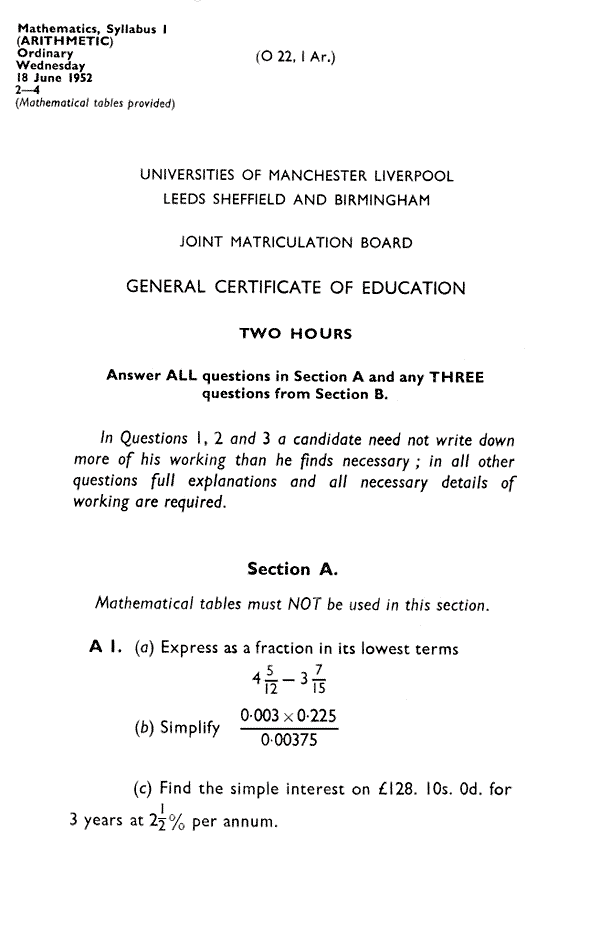

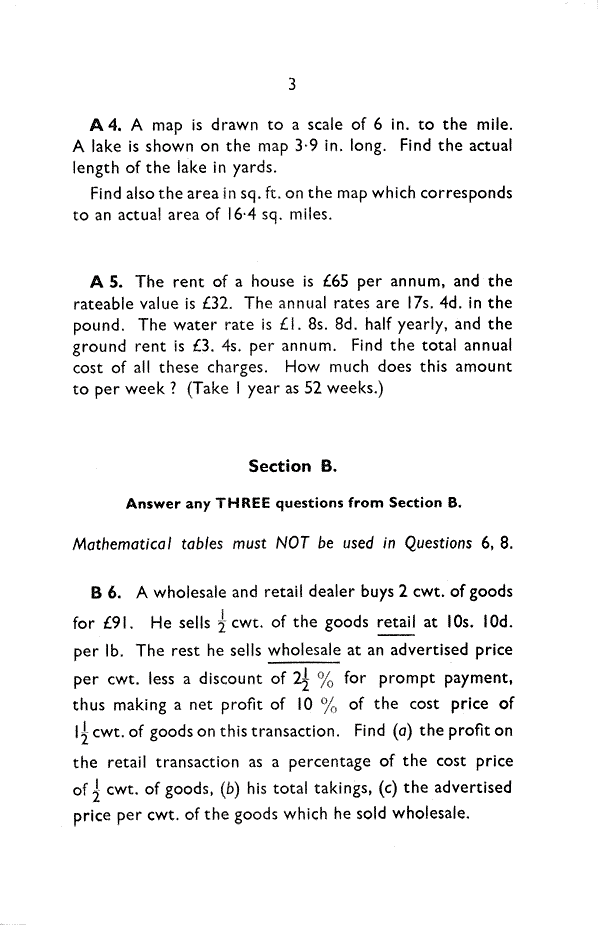
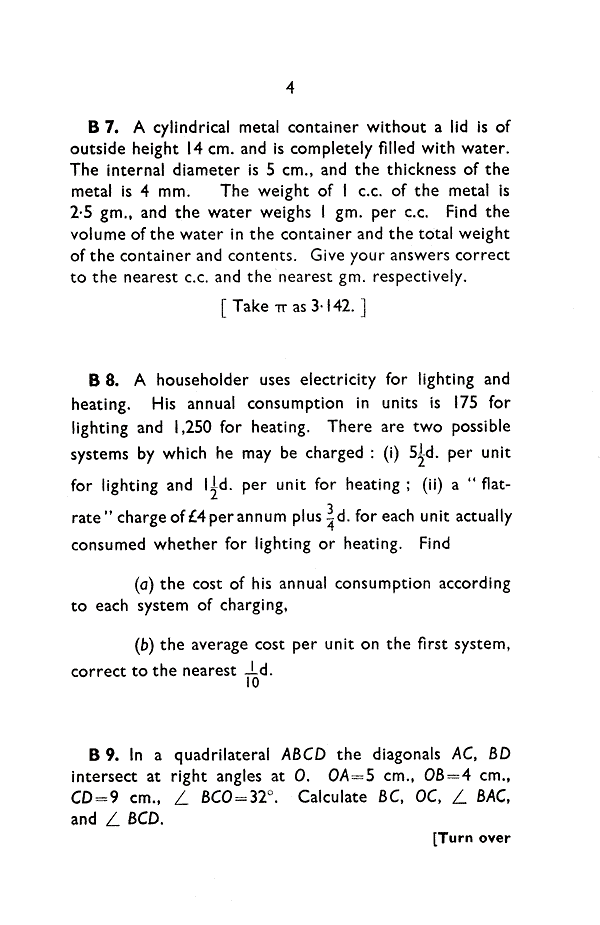
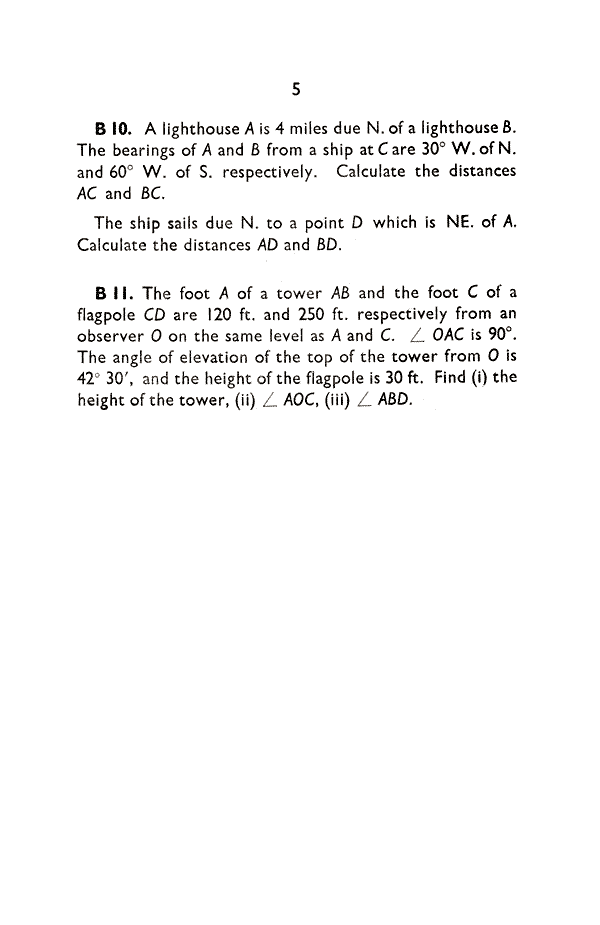
 |
|








Burton Grammar School Master (Geography 1936-1973)
 Ronald Illingworth was born in 1908 in the village of Carlton near Leeds; one of four children to a miner in Yorkshire’s industrial West Riding. He was successful in gaining a coveted scholarship to the Queen Elizabeth Grammar School, Wakefield. Here, he enjoyed great success both academically and on the sports field. He played both cricket and rugby for the school first teams as well as for Yorkshire schoolboys.
Ronald Illingworth was born in 1908 in the village of Carlton near Leeds; one of four children to a miner in Yorkshire’s industrial West Riding. He was successful in gaining a coveted scholarship to the Queen Elizabeth Grammar School, Wakefield. Here, he enjoyed great success both academically and on the sports field. He played both cricket and rugby for the school first teams as well as for Yorkshire schoolboys.
From here, he gained a place to read Geography at Leeds University which he attended from 1927-30. His sporting prowess continued and he played rugby and cricket for both Leeds University and combined University teams.
One of his masters at Queen Elizabeth Grammar School lived near Chepstow in what is now Gwent and during the school holidays, out of school term, he returned home and took Ronald with him. It was through this relationship that he met Betty from that area who was to become his future wife.
Deciding on a teaching career, his first post was at Huish’s Grammar School in Taunton in 1931. This also turned out to be his ‘golden era’ for sport playing both cricket and rugby for Somerset. He opened the innings for Taunton for many years with Harold Gimblett who went on to be well known Internationally.
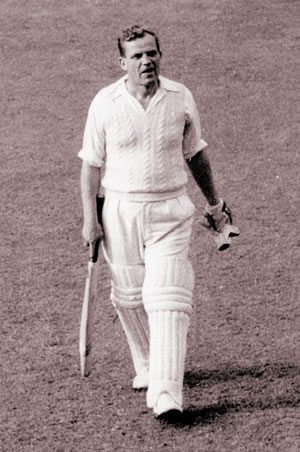 In 1931, whilst playing for Taunton at Sidmouth, a hard-hitter, he hit a ball completely out the grounds. Having tea on a verandah on and seeing the ball heading towards him, a man had the presence to stand up and catch the ball to prevent it from crashing onto the table. After the game, so impressed, Sidmouth Cricket Club mounted the ball and presented it to the unwitting fielder. Ron was delighted to find that this is legendarily recorded in the clubs history.
In 1931, whilst playing for Taunton at Sidmouth, a hard-hitter, he hit a ball completely out the grounds. Having tea on a verandah on and seeing the ball heading towards him, a man had the presence to stand up and catch the ball to prevent it from crashing onto the table. After the game, so impressed, Sidmouth Cricket Club mounted the ball and presented it to the unwitting fielder. Ron was delighted to find that this is legendarily recorded in the clubs history.
Ron and Betty married in 1933 and their first son, John, was born a year later. Second son Hugh was born some seven years later.
After 5 years of teaching Geography at Huish’s Grammar School, Ron was interviewed at the Russell Hotel in London by Burton Grammar School headmaster, Mr W.D. Fraser, for the post of Head of Geography. He was successful and so in 1936, he moved to Burton to take up the post and, after a short period in rented accommodation, moved into the house on Bretby Lane which was to be his home for the rest of his life. Jake Hammond, a fellow teacher who also enjoyed a very long career at Burton Grammar School also lived close by.
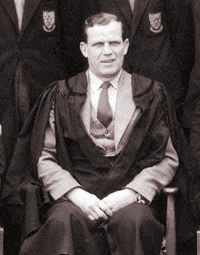 Mr Illingworth quickly gained a reputation for being a stern but fair disciplinarian and naturally became master in charge of cricket.
Mr Illingworth quickly gained a reputation for being a stern but fair disciplinarian and naturally became master in charge of cricket.
He also soon established himself as a sportsman, playing both cricket and rugby for Burton, where his introduction caused some excitement. Burton Cricket club was a highly esteemed club in those days and Ron scored many centuries. During the Second World War ‘Holidays at Home’ activities, Burton played against a visiting celebrity side which included a number of International and Test cricketers, after a magnificent innings, Ron made the local headlines with the story ‘174 Runs Off Four Test Bowlers’. Another famous innings that made the press was when Burton played Repton; a boundary was needed from the last ball to give Burton victory and Ron, whose innings had outlasted a number of batsmen, yet another century. It is said that the ball was struck so crisply and with such power that, although never leaving the ground more than six feet, it was still well off the ground when it crossed the boundary. Ron certainly had the stuff that legends are made of!
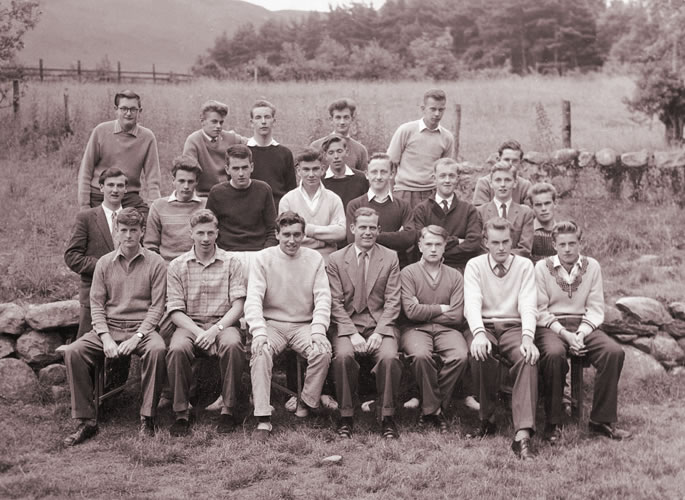 Ron was also an accomplished pianist and played at musical events and school assemblies for many years. His additional geographical activities also included field study groups to places such as the Lake District which he particularly enjoyed. Many of his pupils went on to enjoy distinction in both cricket and Geography,
Ron was also an accomplished pianist and played at musical events and school assemblies for many years. His additional geographical activities also included field study groups to places such as the Lake District which he particularly enjoyed. Many of his pupils went on to enjoy distinction in both cricket and Geography,
He retired from Burton Grammar School in 1973 after 37 years service where, after decades of association, he for the first time discovered that he had exactly the same date of birth as Ellick Ward.
After retiring, he continued to lead a full life and took up golf to good effect. After some years, Betty’s health deteriorated and she died in 1991. Ron died in the following year.
His first son John, an ex-BGS pupil himself, read Mathematics at Oxford before a career with Rolls-Royce. His second son; Hugh, also went on to Oxford to read Chemistry before becoming a schoolmaster. Tragically, he and his wife were killed in a road accident in Kenya in 1968.

Biology field trips remembered – Michael Tanton (1946-54)
Raymond Crowther, the biology teacher at the time, established the Burton Grammar School Field Club to some enthusiasm in 1950. In its first year, Mr Crowther took a group from the club, that included me, to the New Forest, where we camped on the edge of heathland and in sight of the Balmer Lawn Hotel at Brockenhurst. The trip had been organized ahead in typical Raymond Crowther style, and to us the arrangements just seemed to happen – I doubt that we appreciated at the time the amount of slow correspondence required in those days to make such trips successful.
All the camping gear was manhandled by us to the guard’s compartment on the train from Burton to London, then from the train down into the Underground station where we were expected by the station staff. The train on the Underground was held while we loaded everything into one of the carriages for the journey to Waterloo Station where the staff again held up the Underground train for the similarly tedious job of off-loading it all again. It then had to be manhandled again onto the Southern Region train, and then off again at Brockenhurst. After some delay, Mr Crowther was able to find his contact at Brockenhurst, who turned up with a lorry to take us and all our gear to the camp site.
The summer of 1950 was very hot, so we had a wonderful two weeks in the New Forest, with many long hikes and a trip across the Solent to the Isle of Wight.

The above photograph shows Raymond Crowther crouched in front of the tent I shared with several others at the edge of the heath near the Balmer Lawn Hotel.
Mr Crowther of course had his own tent, for the rest of us, it was two or three pupils to each tent. They were former army tents which were made of heavy canvas with wooden poles and took quite a lot of effort to erect compared to modern tents! No sewn-in floor of course, and we had to dig a channel all round to lead water away from the tent if it happened to rain (it didn’t – it was a very hot summer!). We had to braille the sides up each morning to air inside, and dig hip holes and fill with bracken from the scrub behind our tent. Sleeping on the ground was then reasonably comfortable. The camping and cooking gear Raymond had managed to borrow from Byrkley Scout Group – but that is almost another story in itself.
The following year, 1951, the Field Club went to the Lake District and camped for three weeks near Watendlath Tarn, again by train and with much man-handling of our gear. My main memory of that trip is of day after day of rain, with damp clothing and bedding that we were assured would be fine once it had been warmed up with body heat!
On several occasions a number of the group walked into Keswick, and at that time one could walk all the way along the middle of road and never encounter a car on the round trip – just the occasional bicycle! In those days the local dialect was very broad, and we found it quite difficult to follow what the locals were saying. On my last trip there, in 2003 with my wife, I found things were very different – cars everywhere, and little evidence of the broad dialect I’d encountered over 50 years ago.
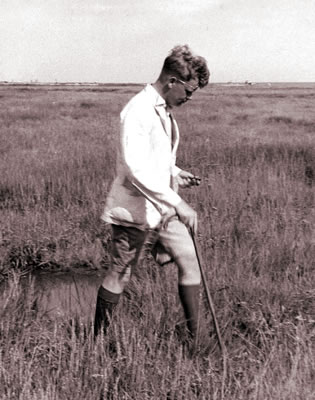 In 1952 and 1953 Raymond found a different venue for the Field Club – Flatford Mill Field Centre. We went to different courses in the two years, the first on freshwater biology, and the next year on estuarine biology. They were a valuable learning experience and we were able to make the most of the good weather in both summers. Best of all, we didn’t need to transport all that camping gear of previous years!
In 1952 and 1953 Raymond found a different venue for the Field Club – Flatford Mill Field Centre. We went to different courses in the two years, the first on freshwater biology, and the next year on estuarine biology. They were a valuable learning experience and we were able to make the most of the good weather in both summers. Best of all, we didn’t need to transport all that camping gear of previous years!
In those days the train trip itself was an experience – first of all from Burton to Leicester on the Leicester Line, then change at Leicester for Kettering, change again at Kettering for the cross-country trip to Cambridge, change at Cambridge for Ipswich, then yet another train to Manningtree where we were met by transport from the Field Station. Many of the railway lines we travelled on for those trips fell to the Beeching axe of the 1960s. Our group, including me, Alan Bull, John Jones, Tony (‘Charles’) Neville, Gordon Pritchard nearly all finished up continuing in one area or another of biology.
The photograph shows Raymond Crowther walking across a salt marsh near Flatford. This was his characteristic summer garb – brown shoes, khaki shorts and white safari jacket. When we were in the cooler, wetter conditions in the Lake District in 1951 the white coat was replaced by his old RAF tunic top. On these expeditions, he always had his walking stick, his pipe, a tin of Mick McQuaid tobacco, and a hand lens with him.
I used the box camera through to the Flatford Mill Freshwater Biology Course in 1952, but then an uncle gave me an old Zeiss Baby Ikonta camera with a Tessar lens and speeds of 1/25, 1/50 and 1/75th of a second. I used that for the Estuarine Biology course at Flatford Mill in 1953. Another uncle had given me a lens for enlarging – a fairly simple lens, mounted in a tube made of gummed brown paper – he had made it for some device he had been constructing, but had found a better lens.
I pulled out my old Meccano set, acquired an empty National Dried Milk tin as a light box and with balsa wood and two sheets of glass and constructed myself and enlarger. My uncles would have made Heath Robertson look like and amateur, and I’m glad to say some of the Heath Robinson aura seems to have shone on me too. So the attached photos of Flatford were enlarged and developed in my bedroom, and washed in the bathroom sink and glazed on the bedroom window!
